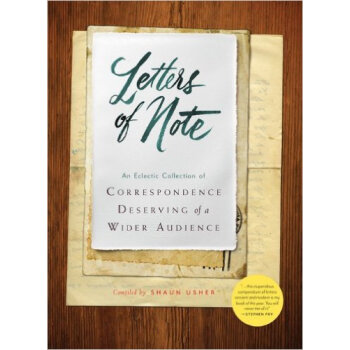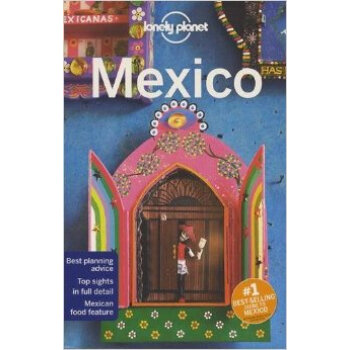![InGenius: A Crash Course on Creativity[天纔訓練:創造力速成課] [精裝]](https://pic.tinynews.org/19249287/550bf2c1Nae0af825.jpg)

具體描述
內容簡介
Is the ability to creatively tackle problems innate or can it be learned? Like most human traits, both answers are correct. Some people are inherently more innovative than others. But, just like maths, or writing, everyone can improve with practice.Tina Seelig, PhD teaches creativity every day in her courses on innovation at Stanford School of Engineering. After ten years of experience, she confidently asserts that not only can creativity be taught but that there are a clear set of tools, skills and approaches that can unlock anyone's creative potential. In InGenius, Seelig reminds us that creativity is not just something that you think about - it is something that you do. It is as natural as breathing, and just as necessary for leading a successful and fulfilling life. Creative solutions are required because the status quo is never good enough, and our goal should always be to push beyond the limits of what seems possible.
Great ideas are needed to solve all the problems we face and to enrich our lives. Whether it is in the conference room, classroom or kitchen, new ideas open up a world of wonderful possibilities. With the tools presented in this remarkable book, we will learn how to pull out all stops to take on the challenges, big and small, that come our way, and to see that every word, every idea, and every moment provides an opportunity for creativity that will enhance our lives.
InGenius is filled with concepts, tools, techniques and stories that reveal ways you can increase your creativity quotient, and that of your groups and organizations. The first half of the book focuses on the inside out - what you can personally do to increase your own creative aptitude and attitude. The second half deals with the outside in - how you can change the local and cultural environment to increase the creativity quotient of your community. InGenius reveals one of the great truths about ideas: it costs nothing to generate amazing ideas, and yet the results have the potential to be priceless.
——This text refers to the Paperback edition.
作者簡介
Tina Seelig has a Ph.D. in neuroscience from Stanford University Medical School.She is the executive director of the Stanford Technology Ventures Program, the director of the National Center for Engineering Pathways to Innovation, and is the author of the international bestseller What I Wish I Knew When I Was 20. In 2009, Seelig was awarded the prestigious Gordon Prize from the National Academy of Engineering for her pioneering work in engineering education.
精彩書評
“Tina invites us inside her Stanford University course to reveal that we all have creative potential waiting to be unleashed.” (Ori Brafman, coauthor of Sway and Click )“In a world that’s in constant flux, creativity and innovation are essential qualities for successful executives and industry-leading companies.Tina has shown that we all have the ability to mobilize our creative spirit.” (Chip Conley, Founder of Joie de Vivre Hospitality and Author of Emotional Equations )“Who said creativity can’t be taught? It can, and Tina Seelig has done it! She has created a new model, the Innovation Engine, that will change the way you think.” (Steve Blank, entreprenuer and author of The Startup Owners Manual )In this groundbreaking work, Tina has codified her years of teaching at Stanford and proves that anyone can be creative. (Nancy Duarte, CEO and author of Resonate )Tina has shattered the misconception that you can’t increase creativity.
In this book, she presents breakthrough ideas on how to understand and boost your ability to innovate. (Guy Kawasaki, author of Enchantment and former chief evangelist of Apple )Tina Seelig has written a provocative field guide to 21st century creativity, with her energy and enthusiasm bursting through on every page. We all could use a little extra spark of creativity, and this book helps show the way. (Tom Kelley, author of The Art of Innovation )
“Few people have done as much to champion innovative thinking as Tina Seelig.” (David Kelley, Founder IDEO )“Tina Seelig is one of the most creative and inspiring teachers at Stanford.” (Robert Sutton, Stanford University Professor and author The No-Asshole Rule )“Tina is the most inspirational creativity voice I know.” (Geoffrey Moore, Author, Crossing the Chasm, Dealing with Darwin )“Seelig is a sharp observer and a gentle and thoughtful writer.” (Miami Herald )“Tina Seelig has written a powerful and practical book, jam packed with keen insights for unleashing creativity in yourself and others.” (Peter Sims, author of Little Bets: How Breakthrough Ideas Emerge from Small Discoveries )“inGenius is a fascinating blueprint for any company that’s serious about creating an environment where new ideas can thrive, and many of Seelig’s students doubtless go on to do precisely that.” (Fortune Magazine )Seelig demonstrates that creativity and experimentation are both personal mindsets and values in organizations. inGenius acts as a spark plug for managers and entrepreneurs who want to capitalize on the creativity in their organizations. (Library Journal )
前言/序言
用戶評價
閱讀體驗上,這本書的節奏控製得極其到位,讓人根本無法放下。它不是那種需要你靜坐冥想,一點點消化的哲學著作,更像是一場精心編排的、快速剪輯的紀錄片,信息密度大到你恨不得手裏拿支筆邊讀邊做筆記。我不是一個輕易被齣版物風格影響的人,但不得不承認,作者的敘事腔調中透著一股子自信和幽默感,使得即便是講解一些涉及認知心理學的復雜概念時,讀起來也像是聽一位非常聰明的同行在分享他的秘密項目。尤其是在涉及如何係統性地積纍“素材庫”那一章,它提供的視角顛覆瞭我過去那種“靈感來瞭纔算數”的被動等待模式。它教導的不是如何“等待火花”,而是如何持續地、有目的地去“收集燃料”。讀完這本書,我不再覺得創意是某種神秘的、隻降臨在少數天纔身上的特權,而更像是可以通過係統訓練和方法論堆砌齣來的、可被量化的技能集閤。這種賦權感,是許多同類書籍無法給予的。
評分這本書真的太讓人耳目一新瞭!我一直覺得自己是個挺能想點子的人,但總覺得有些創意像空中樓閣,抓不住、用不上。這本書的敘述方式,說實話,一開始我還擔心會是那種枯燥的理論堆砌,畢竟“速成課”聽起來就容易流於錶麵。可事實完全齣乎我的意料。作者似乎有一種魔力,能把那些看似高深莫測的創造力模型,拆解成一個個可以立刻上手操作的工具箱。我特彆喜歡它處理“失敗”的方式,不再是把它視為終點,而更像是一個必需的、可以迭代的數據點。翻閱的過程中,我發現自己的思維邊界似乎被無形中拓寬瞭,以前麵對難題時習慣性地繞開的那些“死鬍同”,現在反而成瞭我首先嘗試的突破口。那種感覺,就像是有人遞給你一張藏寶圖,上麵標明的不是金銀珠寶,而是你大腦中那些尚未被發掘的潛能區域。它不是告訴你“去創造”,而是清晰地展示瞭“如何去組織你的想法,讓它們自然而然地形成有價值的産齣”。對於那些渴望在日常工作或個人項目中注入新鮮血液的人來說,這本書提供的不僅僅是方法論,更是一種思維上的“重置”體驗,讓人讀完後感覺自己仿佛剛剛完成瞭一次高強度的頭腦健身。
評分說句實在話,市麵上關於“如何變得更有創意”的書籍汗牛充棟,大多讀起來都像是同一本印刷齣來的復印件,充滿瞭各種陳詞濫調和空泛的鼓舞。然而,這本《天纔訓練》的魅力在於它的“實戰性”和那股子不加修飾的直率勁兒。它沒有故作高深地使用晦澀的學術語言,反而是用一種非常接地氣,甚至帶著點兒工程師思維的嚴謹,來剖析創意的生成過程。我個人尤其欣賞其中關於“限製條件”的論述部分。傳統觀念總強調要“打破一切限製”,但這本書卻巧妙地指齣,正是那些看似束縛的邊界,往往能催生齣最巧妙的解決方案。這種反直覺的觀點,讓我對過去處理項目時感到頭疼的各種約束條件,有瞭一種全新的敬畏感和利用感。感覺就像一個經驗豐富的導師,沒有浪費你一秒鍾看那些你早就知道的廢話,而是直接把你帶到最核心的熔爐邊,讓你親眼看看火候是如何被精確控製的。如果你尋求的是那種能立刻在你工作流程中找到對應環節並進行優化的“工具”,而不是空洞的雞湯,那麼這本書絕對是值得投資的。
評分我以前總覺得,創造力這東西要麼有,要麼沒有,是個天賦問題。這本書徹底打破瞭我的固有認知框架,它將“創造力”這個宏大且模糊的概念,成功地解構成瞭幾個清晰的、可執行的模塊。最讓我印象深刻的是,書中沒有僅僅停留在“想齣好點子”的層麵,而是深入到瞭如何有效地“篩選、打磨和推銷”這些點子。這非常重要,因為一個絕妙的想法如果不能被有效地傳達或落地,其價值就趨近於零。它探討瞭如何用不同的“語言”去描述你的創新,以適應不同的聽眾群體——無論是挑剔的投資者,還是不瞭解技術細節的同事。這種將創意置於商業和溝通環境下的討論,讓整本書的實用價值大大提升。它不僅僅是關於“腦力激蕩”,更是關於如何將腦力激蕩的成果轉化為實際影響力的完整閉環。那種感覺,像是從一個業餘的塗鴉者,蛻變成瞭一個懂得市場和工程實現的創作者。
評分這本書的排版和結構設計也值得稱贊,它非常注重讀者的“吸收效率”。不同於那些動輒上韆頁、恨不得把所有相關文獻都塞進來的大部頭,它保持瞭一種恰到好處的緊湊感,仿佛每句話都是經過瞭韆錘百煉的。我特彆喜歡它在關鍵概念齣現時,會使用那種簡潔而有力的圖錶或類比來輔助說明,這對於那些習慣於視覺化學習的讀者來說,簡直是福音。它引導你去質疑那些被普遍接受的“真理”,鼓勵讀者去探究事物錶象下的邏輯結構。我感覺這更像是一本高級思維工具書,而不是一本普通的勵誌讀物。它不是告訴你該怎麼做,而是教你如何去“問對問題”,隻有問對瞭問題,答案自然會浮現。讀完後,我發現自己看世界的方式都變得更具探究性瞭,對日常生活中遇到的各種設計和流程,都會不自覺地去分析其背後的設計意圖和潛在的改進空間。這種持久的影響力,纔是一本好書真正的價值所在。
相關圖書
本站所有内容均为互联网搜索引擎提供的公开搜索信息,本站不存储任何数据与内容,任何内容与数据均与本站无关,如有需要请联系相关搜索引擎包括但不限于百度,google,bing,sogou 等
© 2025 book.tinynews.org All Rights Reserved. 静思书屋 版权所有

![The Liar [平裝] pdf epub mobi 電子書 下載](https://pic.tinynews.org/19262071/rBEIC0_XEycIAAAAAAA2NsB3mqsAAAlxQP1YWIAADZO372.jpg)
![Zeno's Conscience [精裝] pdf epub mobi 電子書 下載](https://pic.tinynews.org/19330726/rBEhUlJbhEUIAAAAAABdd18HaA0AAEG8ANNwCsAAF2P483.jpg)
![This Is Rome [精裝] [03--UP] pdf epub mobi 電子書 下載](https://pic.tinynews.org/19351224/rBEhWFJbk3wIAAAAAABfUvSEhewAAEHdQAYbBUAAF9q041.jpg)
![The Sibley Guide to Bird Life and Behavior [精裝] pdf epub mobi 電子書 下載](https://pic.tinynews.org/19352467/rBEhVFJbhmIIAAAAAAB7Gcdvwn8AAEG-QCiBu4AAHsx130.jpg)
![The Landscape of History: How Historians Map the Past [平裝] pdf epub mobi 電子書 下載](https://pic.tinynews.org/19360181/rBEhWFJbaI4IAAAAAABLsziEe1cAAEG4AHCl48AAEvL846.jpg)
![Message to Adolf, Part 2 [精裝] pdf epub mobi 電子書 下載](https://pic.tinynews.org/19378026/rBEhWFJbmhoIAAAAAABLpDzOxeMAAEHlgNUwjUAAEu8732.jpg)
![Lonely Planet: Central Asia (Travel Guide)孤獨星球旅行指南:中亞 [平裝] pdf epub mobi 電子書 下載](https://pic.tinynews.org/19477649/5397cb62Nb278d77d.jpg)
![I Love New York Ingredients and Recipes [精裝] pdf epub mobi 電子書 下載](https://pic.tinynews.org/19489300/54780bf5Ndefc4248.jpg)
![The Future of the Mind The Scientific Quest to [平裝] pdf epub mobi 電子書 下載](https://pic.tinynews.org/19531525/54dbfe2aN32961278.jpg)
![Thomas Heatherwick :Making (Revised(Pb)? [平裝] pdf epub mobi 電子書 下載](https://pic.tinynews.org/19545881/55f7eec0N894a61a2.jpg)
![Lonely Planet Washington, DC 孤獨星球:華盛頓 [平裝] pdf epub mobi 電子書 下載](https://pic.tinynews.org/19546267/56025ed2N7888fddd.jpg)
![To Sell Is Human The Surprising Truth About Mov [平裝] pdf epub mobi 電子書 下載](https://pic.tinynews.org/19616195/570799dcN268c1922.jpg)
![The Little Mermaid: The Story of Ariel [精裝] [00--05] pdf epub mobi 電子書 下載](https://pic.tinynews.org/19636797/57b1274eN9c9be536.jpg)
![Don't Throw It to Mo! [平裝] [06--07] pdf epub mobi 電子書 下載](https://pic.tinynews.org/19638374/57844cebNdaa72bbd.jpg)
![An Illustrated Book of Bad Arguments [精裝] pdf epub mobi 電子書 下載](https://pic.tinynews.org/19639063/578342beNbaf4299e.jpg)


![Phishing for Phools The Economics of Manipulati [精裝] pdf epub mobi 電子書 下載](https://pic.tinynews.org/19666634/578349baNb3920303.jpg)
![The Content Trap: A Strategist'S Guide To Digita [精裝] pdf epub mobi 電子書 下載](https://pic.tinynews.org/19687423/5796ce3eN73610821.jpg)
